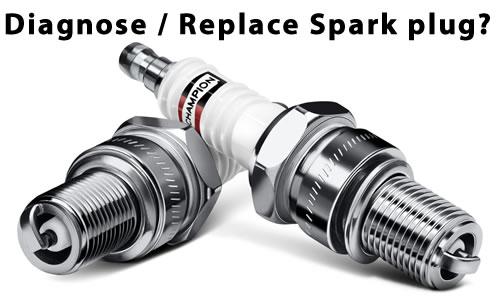Leaderboard
Popular Content
Showing content with the highest reputation on 12/06/2018 in Advices
-
How to diagnose / replace Spark plug? Faulty spark plugs can be a major cause of poor running and poor fuel economy. They eventually wear out over time and need to be replaced. They are also a good indicator of the general condition of an engine and how it is running, i.e. if they are black and oily it could mean worn piston rings or valve stem oil seals, if they are black and sooty it indicates an over rich fuel mixture which could be a blocked air filter, a faulty temperature sensor causing the engine to over fuel or any other number of things. I have posted a picture below showing some of the most common problems here. Thankfully, changing spark plugs is a simple task you can do it by yourself and it doesn’t take too long. You will need a ratchet, extension bar and a spark plug socket to suit your size of plug. It is possible to use an ordinary deep wall socket but a dedicated spark plug socket is better as it has a rubber insert which clips onto the top of the plug and helps you withdraw it easily. Your motor factor/parts supplier will advise you on which plugs your car requires or check below in multiple manufacturer to be sure. NGK spark Plug finder Denso spark plug finder Bosch spark plug finder Champion spark plug finder Pull the wires off the top of the spark plugs. Always pull them by the insulator, try not to pull the thin part of the wire or you can damage it. Always remember which order you removed them in or the car won’t run properly if they are connected in the wrong order or may not run at all. Sometimes it helps to put a bit of tape on the end of the wire and write the cylinder number on it. If the car has a coil over plug ignition system rather than ordinary wires, remove the coil packs first. You now have access to remove the plugs. Put the socket over the end and rotate anti clockwise until the plug comes out. Be careful if the engine is warm, use gloves to hold the plugs otherwise you can burn yourself with the hot plugs. Fit the new plugs. Before you tighten them, make sure they are on the correct threads. If you have a torque wrench, use this to tighten them. Check the workshop manual for the torque settings specific to your car, it’s probably somewhere between 10-30 Nm. If you don’t have a torque wrench, you can use an ordinary ratchet but do not over tighten them. Not only will it make them more difficult to remove next time but if damage the cylinder head you could be in for a whole world of bother, maybe having to remove the head to fix the threads. If the car has long tubes down to the spark plugs, it’s very important that you don’t just drop the plugs down the hole prior to tightening. Either push a piece of rubber pipe over the end and use it to lower them down or use the extension bar and socket to gently land them in their socket. If you drop the plugs down the tubes, you can bend the ground electrode which closes the gap and means you won’t get a proper spark. Refit the plug wires in the same order as you removed them or refit the coil packs if you have a coil over plug system and start the car. **DISCLAIMER** I accept no responsibility for any harm or damage cause by anyone changing their own spark plugs. This is just a simple guide. Always read the manual for your own car before attempting any repairs.1 point
This leaderboard is set to Dubai/GMT+04:00


